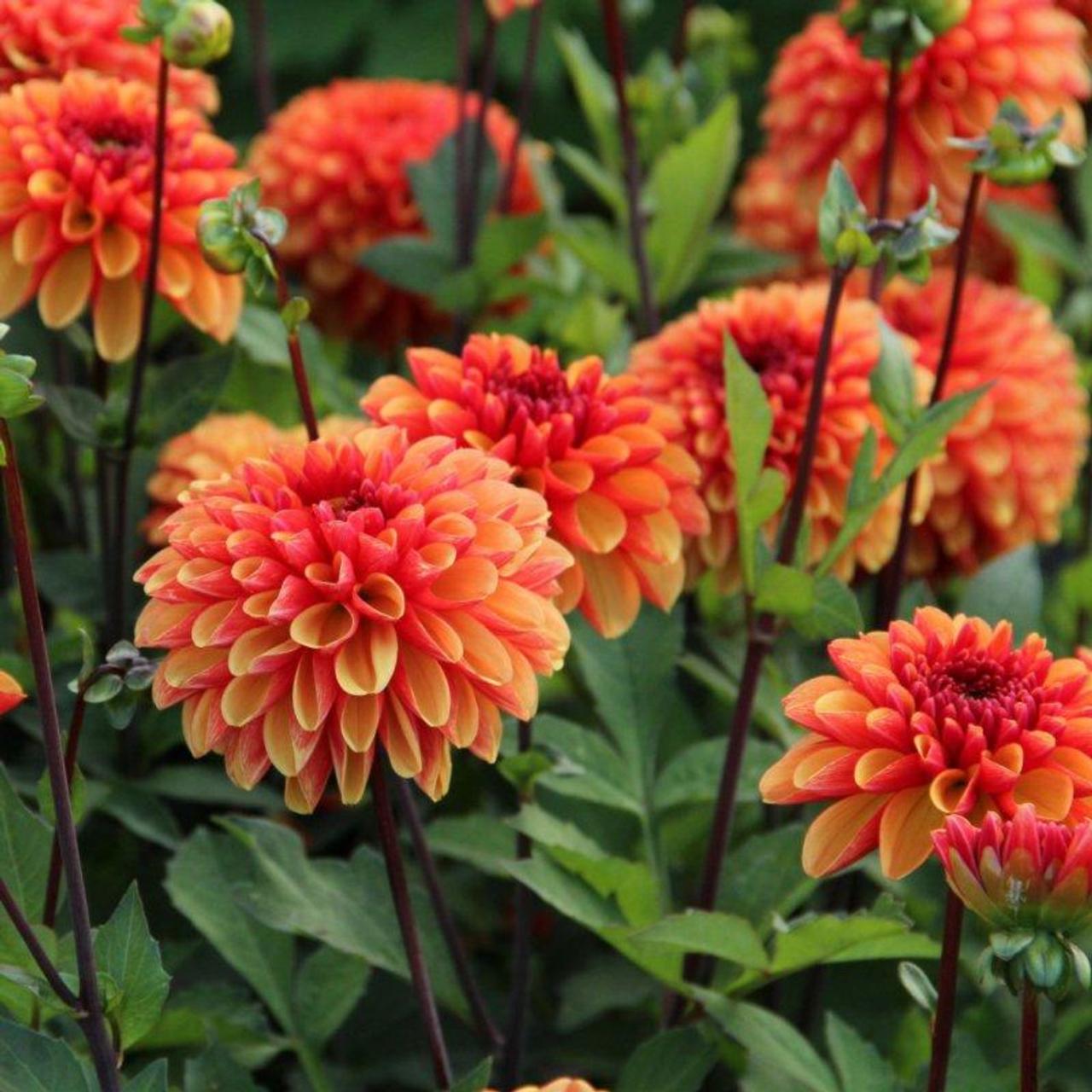1. **Description**:
Dahlia pinnata is a herbaceous perennial plant that grows from tuberous roots. It is known for its beautiful, showy flowers with a wide range of colors, shapes, and sizes. The flowers can be single, semi-double, or fully double, and they come in various forms, including ball, pompon, cactus, and more.
2. **Origin**:
This species of dahlia is native to Mexico and was introduced to Europe in the late 18th century.
3. **Plant Size**:
The size of Dahlia pinnata plants can vary widely, depending on the variety. They typically range from 1 to 6 feet in height, and some of the taller varieties may require staking to support their stems.
4. **Leaves**:
The leaves of Dahlia pinnata are pinnately divided into leaflets, hence the species name "pinnata." The foliage is usually dark green and provides an attractive backdrop to the vibrant flowers.
5. **Flowers**:
Dahlia pinnata produces large and striking flowers. The color range is extensive, including shades of red, orange, yellow, pink, white, and purple. The flowers are composed of ray florets (petal-like structures) surrounding a central disc. Some varieties have single rows of petals, while others have multiple layers of petals.
6. **Blooming Period**:
Dahlias typically bloom from mid-summer to the first frost in the fall. The exact blooming period may vary depending on the climate and growing conditions.
7. **Growing Conditions**:
- **Sunlight**: Dahlias thrive in full sun, meaning they should receive at least 6 to 8 hours of direct sunlight per day.
- **Soil**: They prefer well-draining, loamy soil with good organic matter. Proper soil preparation is essential for healthy growth.
- **Watering**: Dahlia pinnata requires regular watering, particularly during dry spells. Keep the soil consistently moist but not waterlogged.
- **Fertilization**: Providing a balanced, water-soluble fertilizer during the growing season can promote healthy growth and prolific flowering.
8. **Propagation**:
Dahlia pinnata is usually propagated by dividing tubers in the spring. Tubers can be stored in a cool, dry place during the winter months and replanted in the spring.
9. **Uses**: Gardeners often grow Dahlia pinnata for its stunning blooms, making it a popular choice for flower beds, borders, and cut flower arrangements.
10. **Diseases and Pests**: Dahlias can be susceptible to various pests and diseases, including aphids, snails, slugs, powdery mildew, and other fungal infections. Proper care, good garden hygiene, and vigilance can help mitigate these issues.
11. **Varieties**: There are numerous Dahlia pinnata cultivars, each with its unique characteristics in terms of flower shape, size, and color. Some well-known varieties include "Bishop of Llandaff," "Cafe au Lait," and "Karma Choc."
Dahlia pinnata is a favorite among gardeners for its dazzling display of flowers and the variety of cultivars available. It requires some care and attention, but the effort is rewarded with a splendid floral show.







super content
ReplyDelete